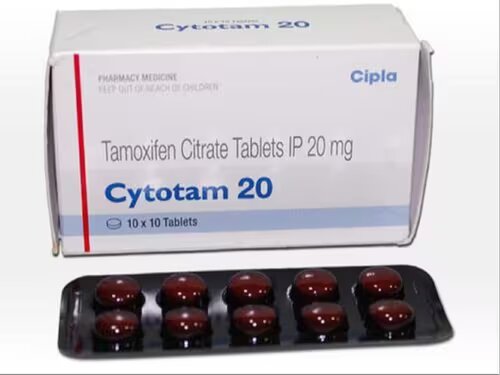Title: Cytotam Medicine: Recognising the Uses, Advantages, and Risks
Introduction:-
Cytotam is a drug that has become well-known for its adaptable uses in a range of medical diseases. This article seeks to give readers a thorough overview of Cytotam medication, including all of its applications, advantages, and safety measures. People can make wise judgements and have a better understanding of this medication’s function in their healthcare by learning more about it.
What is a cytotam drug?
Tamoxifen, a drug categorised as a selective oestrogen receptor modulator (SERM), is sold under the trade name Cytotam. It is generally used to treat breast cancer that is hormone receptor-positive and can affect both men and women. Tamoxifen stops the growth of cancer cells by attaching to oestrogen receptors in breast tissue. Other than breast cancer, cytotam medication has showed promise in treating infertility, gynecomastia (male breast growth), and some forms of ovarian cancer.
Using cytotam medication to treat breast cancer:-
Adjuvant Treatment: –
As adjuvant therapy, cytotam medication is frequently used after primary treatments like surgery or chemotherapy. It works by preventing the effects of oestrogen on breast tissue to lower the risk of cancer recurrence. Cytotam dramatically lowers the incidence of both invasive and non-invasive breast cancer, according to clinical research.
Breast cancer that has metastasized:-
Cytotam medication can be used as a palliative treatment in cases when breast cancer has spread to other parts of the body in order to manage symptoms, delay disease progression, and increase overall survival rates. It aids in limiting the proliferation and migratory abilities of cancer cells by inhibiting oestrogen receptors.
Chemoprevention:-
People with a high risk of getting breast cancer may be prescribed cytotam medication. It has been demonstrated that in these circumstances, the incidence of breast cancer is reduced by almost 50%. Those who have a family history of breast cancer or specific genetic abnormalities may benefit from this preventive strategy.
Benefits and Points to Think About:-
1) Breast cancer that is hormone receptor-positive, which makes up the majority of cases, has shown considerable improvements when treated with cytotam medication. It enhances treatment outcomes and lowers the chance of recurrence by inhibiting oestrogen receptors, which stops oestrogen from encouraging the growth of cancer cells.
2)_Cytotam medications have a well-established safety profile based on considerable research. However, it could have certain adverse effects, just like any medication. Hot flashes, vaginal dryness, an elevated risk of blood clots, and a slight chance of uterine cancer are among the most frequent side effects. It’s critical for people using Cytotam to visit the doctor on a regular basis and to communicate any issues with their medical team.
3) Young women enduring cancer treatment may benefit from using cytotam medicine to help preserve their fertility. It can help protect the ovaries from the harmful effects of chemotherapy and raise the likelihood of a healthy pregnancy after treatment. However, the decision to use Cytotam to preserve fertility should only be made after speaking with medical professionals and taking into account each patient’s particular circumstances and treatment plan.
Use and Safety Recommendations :-
Health Advice:
Cytotam medicine should only be used after consulting a healthcare professional. They will evaluate the patient’s medical background, conduct the necessary tests, and make decisions regarding the proper dosage and length of treatment.
Regular Checkups and Monitoring:
While receiving Cytotam therapy, regular checkups and monitoring are crucial. Tests may be performed by medical professionals to gauge the patient’s response to the medicine and keep an eye out for any potential side effects.
Drug Interactions:
Blood thinners, antidepressants, and some antifungal treatments, as well as cytotam medicine, may all interact with one another. To prevent any potential interactions, it is crucial to let the healthcare provider know about all prescriptions, including over-the-counter medicines and vitamins.
Cytotam medications shouldn’t be taken during pregnancy because they can harm the growing baby. This also applies to breastfeeding. Breastfeeding should be avoided when receiving Cytotam therapy because it may also enter into breast milk.
Conclusion :-
Tamoxifen, a type of cytotam drug, is a key component of the treatment of hormone receptor-positive breast cancer and may be useful for treating a variety of other illnesses. Because of its capacity to inhibit oestrogen receptors in breast tissue, treatment outcomes have significantly improved and the danger of cancer recurrence has decreased. However, it is crucial to take into account Cytotam’s safety profile, possible side effects, and administration instructions. The safe and efficient use of Cytotam medication in enhancing patient results can be ensured by maintaining regular contact with medical specialists, according to the recommended dosage, and monitoring.



